Browse Our Searchable Zotero Article Library
Browse our searchable Zotero library of journal articles written by IBioS faculty members here. Browse articles, or search by author, key words, title, and more.

Moving beyond forest cover: Linking forest density, age, and fragmentation to diet
Journal: Food Security
Open Access
Article by IBioS Member Dr. Terry Sunderand and colleagues.

Climate change mitigation through woodland caribou (Rangifer tarandus) habitat restoration in British Columbia
Publication: Environmental Research Ecology
Open Access
Article by IBioS Member Dr. Cole Burton and colleagues.

Inferring Bird Communities on Remote Freshwater Lakes Through Time-Lapse Imagery
Journal: Canadian Journal of Zoology
Article by IBioS Member Dr. Cole Burton and colleagues.

Combining eDNA Metabarcoding, Hydrology-Based Modeling and Camera Trap Datasets to Assess the Potential of River eDNA in Monitoring Terrestrial Mammals
Publication: Environmental DNA
Open Access
Article by IBioS Member Dr. Cole Burton and colleagues.

The multiple values of nature show the lack of a coherent
theory of value—In any context
Journal: People and Nature
Open Access
Article by IBioS Member Dr. Kai Chan and colleagues.

Pollinators utilize both traditional and forb-supplemented set-aside fields in agriculture
Publication: Agriculture, Ecosystems & Environment
Open Access
Article by IBioS Member Dr. Claire Kremen, Dr. Juli Carrillo and colleagues.

Anthropogenic impacts on seagrass habitat connectivity: a model to explore potential links between human activity and marine invertebrate metapopulation persistence
Open Access
Article by IBioS Member Dr. Mary O’Connor and colleagues.

Rethinking cost–benefit analysis for sustainable marine spatial planning
Publication: Political Science and Public Policy 2025
Article by IBioS Members Dr. Rashid Sumaila and colleagues.

Deep-sea mining and its risks for social-ecological systems: Insights from simulation-based analyses
Open Access
Article by IBioS Member Dr. Rashid Sumaila and colleagues.

Agricultural data governance from the ground up: Exploring data justice with agri-food movements
Open Access
Article by IBioS Member Dr. Hannah Wittman and colleagues.

The many pathways of climate change affecting coastal ecosystems: a case study of western Vancouver Island, Canada
Open Access
Article by IBioS Member Dr. Kai Chan and colleagues.

Initial Effects of Clearcutting and Partial Retention Forest Harvesting Methods on Some Small Mammals in Northern British Columbia
Journal: Journal of Ecosystems & Management
Article by IBioS Member Dr. Cole Burton and colleagues.

Protect US racial affinity groups
Journal: Science
Open Access
Article by IBioS Member Dr. Diane Srivastava, Dr. Alex Moore and colleagues.

Seeing the Savanna Through the Trees: Vegetation Structure, Composition and Function Along a Forest-Savanna Boundary in Cambodia
Journal: BioTropica
Open Access
Article by IBioS Member Dr. Naomi Schwartz and colleagues.

A tale of two disturbances: can mountain pine beetle restore landcover composition and pattern altered by fire suppression in Jasper National Park?
Journal: Regional Environmental Change
Article by IBioS Member Dr. Jeanine Rhemtulla and colleagues.

Article by IBioS Member Dr. Quentin Cronk, Dr. Tara Martin and colleagues.

Impacts of Weather Anomalies and Climate on Plant Disease
Open Access
Article by IBioS Member Dr. Mary O’Connor, Dr. Jonathan Davies and colleagues.

Wildlife’s contributions to people
Journal: Nature
Article by IBioS Member Dr. Jiaying Zhao and colleagues.

Governance and resilience as entry points for transforming food systems in the countdown to 2030
Open Access
Article by IBioS Faculty Member Dr. Rashid Sumaila and colleagues.

Restoring forest cover at diverse sites across Canada can balance synergies and trade-offs
Journal: One Earth
Article by IBioS Member Dr. Matthew Mitchell and colleagues.

Arbuscular mycorrhizal interactions and nutrient supply mediate floral trait variation and pollinator visitation
Open Access
Article by IBioS Member Dr. Claire Kremen and colleagues.

Drought resilience of coastal Douglas-fir is influenced by competition but not genetic selection
Journal: Forest Ecology and Management
Open Access
Article by IBioS Member Dr. Sally Aitken and colleagues.

Journal: PLOS One
Open Access
Article by IBioS Member Dr. Cole Burton and colleagues.

Teknonaturalist: A Snakemake Pipeline for Assessing Fungal Diversity From Plant Genome Bycatch
Publication: Molecular Ecology Resources
Open Access
Article by IBioS Member Dr. Jonathan Davies, Dr. Quentin Cronk and colleagues.

Hope or Despair Revisited: Assessing Progress and New
Challenges in Global Fisheries
Journal: Fish and Fisheries
Open Access
Article by IBioS Member Dr. Rashid Sumaila and colleagues.

Exploring the role of a social carrier in advancing agroecology and territorial autonomy
Journal: Agroecology and Sustainable Food Systems
Article by IBioS Postdoctoral Fellows Dr. Dana James and Dr. Jeffrey Liebert, IBioS Faculty Member Dr. Hannah Wittman and colleagues.

Aquatic invertebrates of epiphytic tank bromeliads on the island of Trinidad, W.I.: an illustrated checklist
Journal: Journal of the Trinidad and Tobago Field Naturalists’ Club
Open Access
Article by IBioS Member Dr. Diane Srivastava and colleagues.

Tree plantations and forest regrowth are linked to poverty reduction in Africa
Open Access
Article by IBioS Member Dr. Jeanine Rhemtulla and colleagues.

Space-for-time substitutions exaggerate urban bird–habitat
ecological relationships
Journal: Journal of Animal Ecology
Open Access
Article by IBioS Member Dr. Kai Chan and colleagues.

Queer Black voices in conservation
Open Access
Article by IBioS Member Dr. Alex Moore and colleagues.

The state of plant conservation in Canada: a survey of practitioners
Open Access
Article by IBioS Member Dr. Jeanette Whitton and colleagues.

National agroforestry program in Mexico faces trade-offs between reducing poverty, protecting biodiversity and targeting forest loss
Article by 2023 IBioS Student Fellow Pablo Gonzalez-Moctezuma, and IBioS Faculty member Dr. Jeanine Rhemtulla.

Passive Recovery Risks Non-native Vegetation Invasion Following Intensive Herbivory by Canada Geese in Two Salish Sea Estuaries
Article by IBioS faculty member Dr. Tara Martin and colleagues.

From conflict to collaboration through inclusive landscape governance: Evidence from a contested landscape in Ghana
Article by IBioS faculty member Dr. Terry Sunderland and colleagues.

A toolbox to quantify human activity in protected areas for park management
Article by IBioS faculty member Dr. Cole Burton and colleagues.

Environmental impacts of genetically modified crops
Article by IBioS faculty members Dr. Frederik Noack, Dr. Josephine Gantois, Dr. Claire Kremen, Dr. Risa Sargent, 2023 IBioS Student Fellow Dennis Engist and colleagues.

The influence of habitat alteration on density of invading white-tailed deer should not be discounted
Article by IBioS faculty members Dr. Cole Burton and colleagues.

Regenerative aquatic foods can be a win–win for human and planetary health
Article by IBioS faculty member Dr. Rashid Sumaila and colleagues.

Towards a more dynamic metabolic theory of ecology to predict climate change effects on biological systems
Article by IBioS faculty members Dr. Mary O’Connor and colleagues.

Co-occurrence in snake and lizard sister species is unrelated to major ecomorphological traits
Article by IBioS faculty member Dr. Jonathan Davies and colleagues.

The long shadow of biodiversity loss
Article by IBioS faculty members Dr. Frederik Noack, IBioS Student Fellow Dennis Engist and colleagues.

Arthropod arbiters: natural enemy communities mediate the effects of landscape and local-scale complexity on Lygus-induced crop loss in organic strawberries
Article by IBioS Member Dr. Claire Kremen and colleagues.

Short-Term Grasslands in Agriculture Support Both Natural Enemy and Phytophagous Arthropod Populations
Article by IBioS Members Dr. Claire Kremen, Juli Carrillo and colleagues.

Flood prevention benefits provided by Canadian natural ecosystems
Article by IBioS Member Dr. Matthew Mitchell and colleagues.

The Convention on Biological Diversity (CBD) has been a pivotal international instrument for global biodiversity conservation since 1992. The recent Kunming-Montreal Global Biodiversity Framework (GBF) aims to provide a pathway for the CBD for the present decade. However, the practicalities of land use and biodiversity conservation pose significant challenges. Drawing from diverse literature and reports, we identify nine implementation challenges for the GBF. These encompass harmonising conservation with sustainable development, integrating local values and indigenous knowledge, adopting a holistic landscape approach, and prioritising effective local governance.
Read more in the article by IBioS faculty member Dr. Jeffrey Sayer and colleagues.

How landscape traits affect boreal mammal responses to anthropogenic disturbance
Understanding mammalian responses to anthropogenic disturbance is challenging, as ecological processes and the patterns arising therefrom notoriously change across spatial and temporal scales, and among different landscape contexts. Responses to local scale disturbances are likely influenced by landscape context (e.g., overall landscape-level disturbance, landscape-level productivity). Hierarchical approaches considering small-scale sampling sites as nested holons within larger-scale landscapes, which constrain processes in lower-level holons, can potentially explain differences in ecological processes between multiple locations.
Read more in the article by IBioS faculty member Dr. Cole Burton and colleagues.
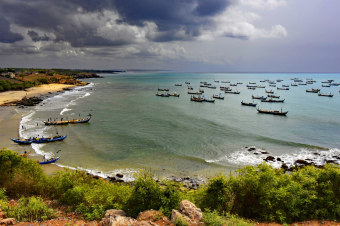
Towards more inclusive community landscape governance: Drivers and assessment indicators in northern Ghana
Community-based approaches to landscape governance are considered more legitimate, equitable, and inclusive ways to manage natural resources and more effective in achieving conservation and livelihood goals than centralised and top-down approaches. In Ghana, the Wildlife Division of the Forestry Commission devolved decision-making authority over natural resources through the Community Resource Management Area (CREMA) governance system. While there is a growing body of literature on the CREMA governance model, few studies have examined the inclusiveness of its decision-making processes.
Read more in the article by IBioS faculty member Dr. Terry Sunderland and colleagues.

One size fits all: How the “Ethiopian Highlands” made Bale Mountains National Park inscrutable
The categories we use to make sense of a place are never neutral. Scientific classifications can maintain ignorance about some aspects of a landscape, even as they create knowledge about others. This article considers this in the context of Ethiopia’s Bale Mountains National Park, a landscape whose hydrologic and socio-cultural characteristics have been made inscrutable through the convergence of imperial legacies, processes of knowledge production, and complex biophysical
properties.
Read more in the article by IBioS faculty member Dr. Terre Satterfield and colleagues.

Biodiversity–production feedback effects lead to intensification traps in agricultural landscapes
Intensive agriculture with high reliance on pesticides and fertilizers constitutes a major strategy for ‘feeding the world’. However, such conventional intensification is linked to diminishing returns and can result in ‘intensification traps’—production declines triggered by the negative feedback of biodiversity loss at high input levels. Here we developed a novel framework that accounts for biodiversity feedback on crop yields to evaluate the risk and magnitude of intensification traps.
Read more in the article by IBioS faculty member Dr. Claire Kremen and colleagues.

Both technological innovations and cultural change are key to a sustainability transition
We are said to be living in the Anthropocene, a time when human activities are having as great an impact on the Earth system as other geological forces. According to the “Planetary Boundaries” framework, which uses the past 10,000 years (the Holocene) as a benchmark, human influence on the Earth system has greatly exceeded the “safe operating space” across multiple indicators, including climate change, biodiversity loss, and nutrient pollution. A critical message is that even if we solve the climate problem, the biodiversity and nutrient pollution challenges will remain.
Read more in the article by IBioS faculty member Dr. Navin Ramankutty.

The benefits of climate change mitigation to retaining rainbow trout habitat in British Columbia, Canada
Climate change is increasing stream temperatures and thereby changing habitat suitability for a variety of freshwater fishes. We investigate how suitable stream habitat for rainbow trout (Oncorhynchus mykiss), a valuable cold-water species, may change in British Columbia, Canada, currently near the north end of their range.
Read more in article by IBioS faculty member Dr. Rashid Sumaila and colleagues.
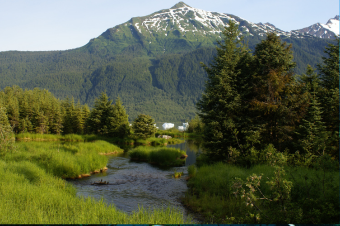
Variable species establishment in response to microhabitat indicates different likelihoods of climate-driven range shifts
Climate change is causing geographic range shifts globally, and understanding the factors that influence species’ range expansions is crucial for predicting future changes in biodiversity. A common, yet untested, assumption in forecasting approaches is that species will shift beyond current range edges into new habitats as they become macroclimatically suitable, even though microhabitat variability could have overriding effects on local population dynamics.
Read more in the article by IBioS faculty member Dr. Amy Angert and colleagues.

Combating the unsustainable exotic pet trade: Effects of conservation messaging on attitudes, demands, and civic intentions
The exotic pet trade poses a major threat to biodiversity conservation. To combat biodiversity loss, it is essential to reduce demand for exotic pets and engage people in civic actions for wildlife conservation. Although messaging has been extensively used in conservation practice, little is known about how it can influence attitudes and various types of actions pertaining to the exotic pet trade. This study examined the impact of conservation messaging in the context of exotic pet ownership and wildlife entertainment visitation as common practices of the exotic pet trade.
Read more in the article by IBioS faculty member Dr. Jiaying Zhao and colleagues.

Community Forests advance local wildfire governance and proactive management in British Columbia, Canada
As wildfires are increasingly causing negative impacts to communities and their livelihoods, many communities are demanding more proactive and locally driven approaches to address wildfire risk. This marks a shift away from centralized governance models where decision-making is concentrated in government agencies that prioritize reactive wildfire suppression. In British Columbia (BC), Canada, Community Forests – a long-term, area-based tenure granted to Indigenous and/or local communities – are emerging as local leaders facilitating proactive wildfire management.
Read more in the article by IBioS faculty member Dr. Shannon Hagerman and Colleagues.

Spatializing oil and gas subsidies in endangered caribou habitat: Identifying political-economic drivers of defaunation
“Reforming environmentally harmful subsidies is an international priority under the UN Convention on Biological Diversity. Research that links industrial subsidies to negative ecological impacts, however, is limited. This paper contributes to the emerging agenda of global “subsidy accountability” research by linking oil and gas subsidies to the decline of endangered caribou herds in British Columbia, Canada. While existing research concretely attributes the decline of caribou herds to industrial activity, including oil and gas development, we suggest there is a need to identify the political-economic structures which drive ongoing industrial development in caribou habitat, including public subsidies. We use government data to map oil and gas wells in critical caribou habitat and determine how many are run by operators receiving provincial fossil fuel “royalty credits”.”
Read more in the article by IBioS Student Fellow Audrey Irvine-Broque and colleagues.

The benefits of climate change mitigation to retaining rainbow trout habitat in British Columbia, Canada
“Climate change is increasing stream temperatures and thereby changing habitat suitability for a variety of freshwater fishes. We investigate how suitable stream habitat for rainbow trout (Oncorhynchus mykiss), a valuable cold-water species, may change in British Columbia, Canada, currently near the north end of their range. We examine a no-mitigation climate change scenario (RCP 8.5), and one with moderate mitigation (RCP 4.5). We used a watershed-scale regression model incorporating topographic, hydrological and climatic variables to estimate current and projected maximum weekly average stream temperatures throughout the province.”
Read more in the article by IBioS faculty member Dr. Kai Chan.
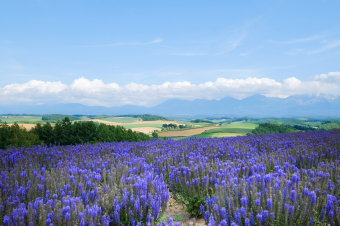
A global biodiversity observing system to unite monitoring and guide action
“The rate and extent of global biodiversity change is surpassing our ability to measure, monitor and forecast trends. We propose an interconnected worldwide system of observation networks — a global biodiversity observing system (GBiOS) — to coordinate monitoring worldwide and inform action to reach international biodiversity targets.”
Read more in the article by IBioS faculty member Dr. Mary O’Connor and colleagues.

Dynamics in the landscape ecology of institutions: lags, legacies, and feedbacks drive path-dependency of forest landscapes in British Columbia, Canada 1858–2020
“Many landscapes are constrained into pathways featuring deforestation, loss of biodiversity, and rising mega-disturbances due to legacies and feedbacks preserved in ecosystems and institutions. Institutions are the norms and rules that emerge locally or are set by prevailing powers, and that mediate coupled social-ecological dynamics.”
Read more in the article by IBioS faculty member Dr. Jeanine Rhemtulla and colleagues.

Visualizing sustainable landscapes : understanding and negotiating conservation and development trade-offs using visual techniques
“The aim of this manual is to strengthen the community of practitioners who are using an innovative range of visual techniques in dealing with conservation and development situations. Visualization techniques are used to compare visions of stakeholders and to negotiate trade-offs through comparing these visions. Different visualization techniques are already widely used and several of these are discussed in this manual.”
Read more in the article by IBioS faculty member Dr. Intu Boedhihartono.
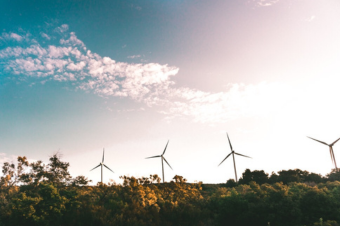
Equity and Justice should underpin the discourse on Tipping Points
“Radical and quick transformations towards sustainability have winners and losers, with equity and justice embedded to a greater or a lesser extent. According to research, only the wealthiest 1-4% of the global population will radically need to change their consumption, behaviours, societal values and beliefs in order to make space for an equitable and sustainable future for nature and people. However, narratives around many ‘positive’ tipping points, such as the energy transition, do not take into account the entire spectrum of impacts the proposed alternatives could have or still rely on narratives that maintain current unsustainable behaviours and marginalise many people. One such example is the move from petrol-based to electric vehicles. An energy transition that remains based on natural resource inputs from the Global South must be unpacked with an equity and justice lens to understand the “true cost” of this transition. Another is the role of ‘nature-based solutions’ to address climate resilience, where ‘nature’ in some parts of the world needs to be maintained as an offset for the continued lifestyles of the wealthy, usually in different parts of the world from where this nature is supposed to be maintained.”
Read more in the article by IBioS faculty member Dr. Rashid Sumaila and colleagues.

A systematic literature review of climate change research on Europe’s threatened commercial fish species
“Climate change poses a major challenge for global marine ecosystems and species, leading to a wide range of biological and social-ecological impacts. Fisheries are among the well-known sectors influenced by multiple effects of climate change, with associated impacts highly variable among species and regions. To successfully manage fisheries, scientific evidence about the potential direct and indirect impacts of climate change on the species targeted by fisheries is needed to inform decision-making processes. This is particularly pertinent for fisheries within European seas, as they include some of the fastest warming water bodies globally, and are thus experiencing some of the greatest impacts.”
Read more in the article by IBioS faculty member Dr. Rashid Sumaila and colleagues.

Assessing the impacts of recreation on habitat use by mammals in an isolated alpine protected area
“The management objectives of many protected areas must meet the dual mandates of protecting biodiversity while providing recreational opportunities. Balancing these mandates is made difficult by constraints on monitoring trends in the status of biodiversity and impacts of recreation. Using detections from 45 camera traps deployed between July 2019 and September 2021, we assessed the potential impacts of recreation on spatial and temporal habitat use for 8 medium- and large-bodied terrestrial mammals in an isolated alpine protected area: Cathedral Provincial Park, Canada. We hypothesized that some wildlife perceive a level of threat from people, such that they avoid ‘risky times’ or ‘risky places’ associated with human activity. Other species may benefit from associating with people, be it through access to anthropogenic resource subsidies or filtering of competitors/predators that are more human-averse (i.e., human shield hypothesis). “
Read more in the article by IBioS faculty member Dr. Cole Burton, Dr. Tara Martin and colleagues.
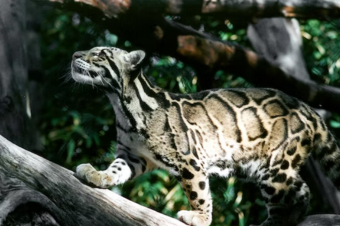
Comparing wildlife habitat suitability models based on expert opinion with camera trap detections
“Expert knowledge is widely applied in ecological and conservation contexts. One application is the development of wildlife habitat suitability models (HSM) for management and conservation decisions; however, the consistency of such models has been questioned. Focusing on one method for elicitation, the Analytic Hierarchy Process (AHP), we generated expert-based HSM for four felid species: two forest specialists [ocelot (Leopardus pardalis) and margay (Leopardus wiedii)], and two habitat generalist species [pampas cat (Leopardus colocola) and puma (Puma concolor)]. Using these HSM, species detections from camera-trap surveys, and generalized linear models, we assessed the effect of study species and participant’s attributes on the correspondence between expert models and camera-trap detections.”
Read more in the article by IBioS faculty member Dr. Cole Burton and colleagues.
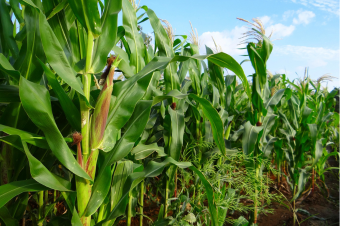
Food sovereignty: An inclusive model for feeding the world and cooling the planet
“The framework of food sovereignty emerged on the global stage in the mid-1990s as diverse social movements representing peasant, Indigenous, fisher, and small-scale farming communities were experiencing a confluence of crises—structural adjustment, rising threats to biodiversity, climate change, rural poverty, and growing levels of world hunger— that continue to accelerate into the present day. In response to these challenges, food sovereignty movements promote policies to ensure rights to healthy and culturally appropriate food, produced through ecologically sustainable methods. The food sovereignty framework emerges from participatory governance structures at intersecting scales—from the local to the global—to support people’s rights to define their own food and agricultural systems. This primer examines the arguments for a rights-based food sovereignty framework to support diets for planetary health and identifies cross-sectoral roles, responsibilities, and challenges in promoting diversified agroecosystems that can feed the world and cool the planet.”
Read more in the article by IBioS faculty member Dr. Hannah Wittman.
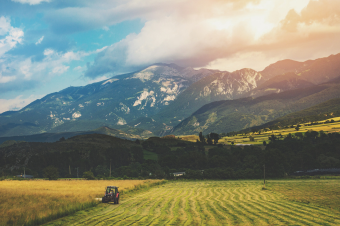
Biodiversity-production feedback effects lead to intensification traps in agricultural landscapes
“Intensive agriculture with high reliance on pesticides and fertilizers constitutes a major strategy for ‘feeding the world’. However, such conventional intensification is linked to diminishing returns and can result in ‘intensification traps’ – production declines triggered by the negative feedback of biodiversity loss at high input levels. We developed a novel framework that integrates biodiversity in crop-yield assessments to evaluate risk and magnitude of intensification traps. Simulations grounded in literature reviews demonstrated that intensification traps emerge in most agricultural landscapes (73%), but rarely in major calorie production systems. Small reductions in maximal production by just 5–10% could be frequently transmitted into substantial biodiversity gains, resulting in small-loss large-gain trade-offs prevailing in landscapes with and without intensification traps.”
Read more in the article by IBioS faculty members Dr. Claire Kremen, Dr. Navin Ramankutty and colleagues.

The living infinite: Envisioning futures for transformed human-nature relationships on the high seas
“We find ourselves at a critical crossroads for the future governance of the high seas, but the perceived remoteness of the global ocean creates a psychological barrier for people to engage with it. Given challenges of overexploitation, inequitable access and other sustainability and equity concerns, current ocean governance mechanisms are not fit-for-purpose. This decade offers opportunities for direct impact on ocean governance, however, triggering a global transformation on how we use and protect the half of our planet requires a concerted effort that is guided by shared values and principles across regions and sectors. The aim of the series of workshops outlined in this paper, was to undertake a futures thinking process that could use the Nature Futures Framework as a mechanism to bring more transformative energy into how humans conceptualise the high seas and therefore how we aim to govern the ocean”
Read more in the article by IBioS faculty member Dr. Rashid Sumaila and colleagues.
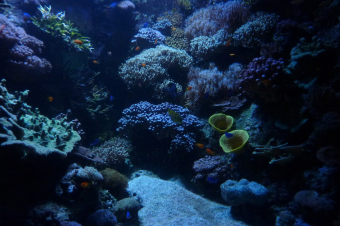
A novel framework to evaluate the financial sustainability of marine protected areas
“Marine Protected Areas (MPAs) are globally underfunded. We present a five-step framework that can help practitioners prioritize actions that may improve financial sustainability, which was applied to six MPAs in Colombia, Bonaire, and Belize. Limited funds were found to directly undermine effectiveness towards conservation goals for five sites, with these impacts particularly significant for four. Annual budgets required increases from 6 % to 141 % to meet financial needs. Two sites had significant underlying weaknesses in their financial strategies that could lead to direct impacts if not addressed, with an additional three sites having more minor, but still observable, weaknesses in this manner. Staff salaries were the largest expense for all MPAs examined and also most frequently in need of additional funds. “
Read more in the article by IBioS faculty member Dr. Rashid Sumaila and colleagues.
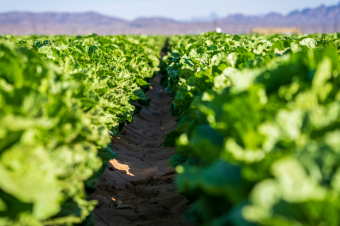
Agroecology as a Philosophy of Life
“Use of the term “agroecology” has greatly increased over the past few decades, with scholars, civil society actors, and intergovernmental organizations identifying agroecology as a promising pathway for realizing more just and sustainable food systems. Using a community-engaged approach, we explore how diverse agroecological actors in southern Brazil describe and define agroecology. We find that across a range of social differences, agroecological actors come together in describing agroecology as a philosophy of life that promotes well-being, positioning agroecology as a counter-narrative to global discourses on “development” that promote economic growth and productivism as the path to a good life. Our findings suggest that the practice of agroecology can enhance diverse rural peoples’ well-being by providing a pathway to overcoming alienation, commodification, and exploitation, although broader political-economic conditions constrain this potential.”
Read more in the article by IBioS faculty member Dr. Hannah Wittman and colleagues.

Risk of extinction, variability in fish species composition, and factors influencing fish biodiversity in the Malacca Strait
“Fish biodiversity in Malaysia is under pressure due to overexploitation, pollution, and climatic stressors. Nevertheless, the information on fish biodiversity and species vulnerability status is not well documented in the region. Therefore, a study on fish species composition and abundance in the Malacca Strait of Malaysia has been conducted for the purpose of monitoring biodiversity, determining the risk of species extinction, and identifying factors influencing biodiversity distribution. The sampling was conducted based on a random stratified sampling method from the three zones of sampling locations, i.e., estuary, mangrove, and open sea area of Tanjung Karang and Port Klang of Malacca Strait. “
Read more in the article by IBioS faculty member Dr. Rashid Sumaila and colleagues.

Experiences and insights on Bridging Knowledge Systems between Indigenous and non-Indigenous partners: Learnings from the Laurentian Great Lakes
“Willingness to engage in equitable and ethical relationships with Indigenous partners is becoming more commonplace within public and academic spheres around the globe. However, insufficient training and attention is being given to produce better outcomes for Indigenous partners. This article is a curation of insights and experiences shared during the virtual talking circle held during the “Bridging Knowledge Systems between Indigenous and non-Indigenous communities” session at the 2021 Annual Conference of the International Association for Great Lakes Research. Through dialogues and exchanges within this circle, we identified core themes, actionable recommendations, and questions worth considering for those wishing to bridge knowledge systems and engage in co-learning processes involving Indigenous and non-Indigenous partners.”
Read more in the article by IBioS faculty member Dr. Andrea Reid and colleagues.

A call for a wider perspective on sustainable forestry: Introduction to the Special Issue on The Social Impacts of Logging
“Global demand for timber is projected to grow and much of this timber will continue to be sourced from natural forests. As these forests, particularly in the tropics, tend to be inhabited by the world’s most marginalized communities, the social impacts of logging require more attention within policy, practice and research. This Introduction to the Special Issue of International Forestry Review on The Social Impacts of Logging compiles evidence that the overwhelmingly negative social impacts of logging are systemic. As logging companies fail to fulfill their social obligations, and elite capture is common, the extent to which local communities benefit from logging operations is minimal, while long-term, harmful effects on livelihoods, social fabric and safety are severe. Logging operations reinforce and often exacerbate pre-existing inequities, particularly for women and Indigenous people. Weak governance, a lack of transparency and poor participation procedures partially explain this
unfavourable situation. However, logging will only achieve better social outcomes if underlying power-imbalances are tackled.”
Read more in the article by IBioS faculty member Dr. Terry Sunderland and colleagues.
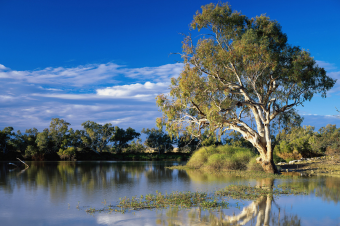
Connected Conservation: Rethinking conservation for a telecoupled world
“The convergence of the biodiversity and climate crises, widening of wealth inequality, and most recently the COVID-19 pandemic underscore the urgent need to mobilize change to secure sustainable futures. Centres of tropical biodiversity are a major focus of conservation efforts, delivered in predominantly site-level interventions often incorporating alternative-livelihood provision or poverty-alleviation components. Yet, a focus on site-level intervention is ill-equipped to address the disproportionate role of (often distant) wealth in biodiversity collapse. Further these approaches often attempt to ‘resolve’ local economic poverty in order to safeguard biodiversity in a seemingly virtuous act, potentially overlooking local communities as the living locus of solutions to the biodiversity crisis. We offer Connected Conservation: a dual-branched conservation model that commands novel actions to tackle distant wealth-related drivers of biodiversity decline, while enhancing site-level conservation to empower biodiversity stewards. We synthesize diverse literatures to outline the need for this shift in conservation practice. We identify three dominant negative flows arising in centres of wealth that disproportionately undermine biodiversity, and highlight the three key positive, though marginalized, flows that enhance biodiversity and exist within biocultural centres.”
Read more in the article by IBioS faculty member Dr. Terry Sunderland and colleagues.

Effectiveness of Heilongjiang Nanwenghe Nature Reserve in Improving Habitat Quality in and around the Reserve
“Biodiversity loss is a critical challenge globally, and protected areas (PAs) has been established as an important policy tool for conservation. However, doubts exist regarding their effectiveness, and their policy effects and spatial spillover effects on surrounding areas are poorly understood. To address this, this study evaluated the effectiveness of Heilongjiang Nanwenghe National Nature Reserve (HNNNR) in China by using a combination of the InVEST model and the improved SDID model. The study covers a time span of approximately 31 years (1990–2020) and is divided into two periods (1990–1999 and 1999–2020),
which allows for the assessment of the effects of nature reserves in the region. Our results showed that: (1) The establishment of HNNNR has improved the habitat quality in the reserve and Non-reserve area, with a greater impact on habitat quality in nonreserve areas than in the reserve; (2) The core zone within HNNNR showed the most significant improvement in habitat quality, while the buffer zone showed the least improvement; (3) The improvement of habitat quality in non-reserve area was mainly contributed by the policy spatial spillover effects, where the buffer zone has the strongest spillover benefits to the non-reserve, but the core zone has the weakest spillover effects to the non-reserve. Our results show the beneficial impact of a nature reserve for improving habitat quality in and around the reserve.”
Read more in the article by IBioS faculty member Dr. Terry Sunderland and colleagues.
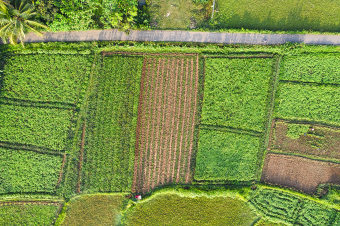
Exploring scenarios for the food system–zoonotic risk interface
“The unprecedented economic and health impacts of the COVID-19 pandemic have shown the global necessity of mitigating the underlying drivers of zoonotic spillover events, which occur at the human–wildlife and domesticated animal interface. Spillover events are associated to varying degrees with high habitat fragmentation, biodiversity loss through land use change, high livestock densities, agricultural inputs, and wildlife hunting—all facets of food systems. As such, the structure and characteristics of food systems can be considered key determinants of modern pandemic risks. This means that emerging infectious diseases should be more explicitly addressed in the discourse of food systems to mitigate the likelihood and impacts of spillover events. Here, we adopt a scenario framework to highlight the many connections among food systems, zoonotic diseases, and sustainability.”
Read more in the article by IBioS faculty member Dr. Claire Kremen and colleagues.

Against the odds: Network and institutional pathways enabling agricultural diversification
“Farming systems that support locally diverse agricultural production and high levels of biodiversity are in rapid decline, despite evidence of their benefits for climate, environmental health, and food security. Yet, agricultural policies, financial incentives, and market concentration increasingly constrain the viability of diversified farming systems. Here, we present a conceptual framework to identify novel processes that promote the emergence and sustainability of diversified farming systems, using three real-world examples where farming communities have found pathways to diversification despite major structural constraints. By applying our framework to analyze these bright spots in the United States, Brazil, and Malawi, we identify two distinct pathways—network and institutional—to diversification. “
Read more in the article by IBioS faculty members Dr. Claire Kremen and Dr. Hannah Wittman.